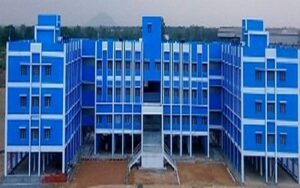The Khalji Dynasty (CE 1290 – 1320)
-
Jalal-ud-din Khilji (CE 1290-1296)
-
Jalal-ud-din was the founder of the Khalji dynasty.
-
The only important event of his reign was the raid by his nephew Ala-ud-din on Devagiri in CE 1294. After defeating the ruler of Devagiri, he returned to Kara with a huge amount of Gold and precious articles.
-
Jalal-ud-din wanted to congratulate his nephew but his nephew, Ala-ud-din killed his uncle.
-
-
Ala-ud-din Khilji (CE 1296-1316)
-
Ala-ud-din Khalji, the nephew and the son-in-law of Jalal-ud-din Khalji, came to the throne in CE 1296, after murdering his uncle.
-
Ala-ud-din was an able administrator. He made a thorough study of the previous rulers and found out the causes of rebellions by the nobles, and discovered three main reasons:
-
The wealth of the nobles.
-
Social gatherings.
-
the habit of excessive drinking.
-
-
He prohibited marriage parties and drinking of wine in public.
-
If nobles revolted, the gifts given in the form of land and property were taken back.
-
An effective spy system was installed.
-
Taxation revolution made. Tax had to be paid regularly and the revenue was used to maintain a strong army. In some areas such as the Ganga-yamuna doab (land between two rivers), it was raised to one-half of the total product. Grains stored in the government granaries.
-
During the reign of Ala-ud-din Khalji and Muhmmad-bin-Tughlaq, the land tax was raised to 50% of the produce from the land.
-
He made economic reforms, checked, controlled and fixed the market price of the essential goods, officers were appointed for the same, there were price limits.
-
Ala-ud-din introduced a system of chehra, for every soldier and dagh or branding of horses to stop the practice of substituting thoroughbred horses with ordinary ones. These were signs of identification.
-
Ala-ud-din was a patron of art and architecture. Poets and scholars adorned his court, Amir Khusrau and Amir Hasan among them
-
He was a great lover of monuments, he built Alai Darwaza near Qutab Minar, a new town Siri near delhi, and also constructed Hauz Khas, a big tank for the royal bath.
-
He was a religious man but never let the religion interfere in state affairs.
-
Conquests:
-
Gujarat:
-
Ala-ud-din sent an expedition under his generals Ulugh Khan and Nasrat Khan to Conquer Gujarat, they defeated King Karan Dev, plundered the state and returned with rich booty.
-
They also brought with them Malik Kafur, a slave brought for a thousand dinars from the port of Cambay. He was given the name Hazar Dinari, malik Kafur became one of Ala-ud-din’s trusted generals. He conquired Dwarasamudra and Madurai for Ala-ud-din.
-
-
Rajasthan:
-
Ala-ud-din had a long history of expeditions in the rajput states. In CE 1301, he conquired the fort of Ranthambhor.
-
In CE 1303, he captured Chittorgarh. Alauddin also overran Jalor. Almost all the states of Rajasthan were forced to submit to him. But he did not annexed these states of rajputs.
-
Capturing malwa he annexed it under his direct rule.
-
By CE 1305, he became the sole master of the Northern Indian region including the regions: Ujjain, Dhar, Mandu and Chanderi.
-
-
Deccan and South India:
-
By 1306-1311 CE, Malik Kafur, the general of Ala-ud-din defeated the Yadavas of Devagiri, Hoysalas of Dwarasamudra, Kakatiyas of Warrangal and the Pandyas of madurai, These kingdoms were not annexed but handsome annual tributes were taken from them.
-
-
-

